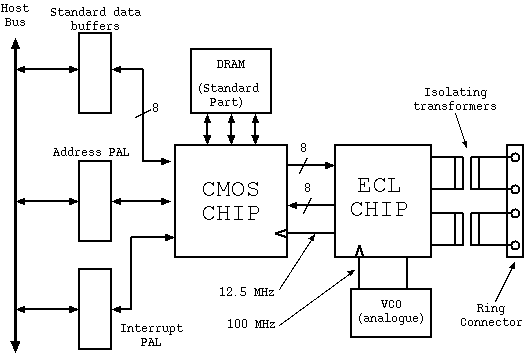

The ECL chip clocks at 100 MHz and contains the minimal amount of logic that needs to clock at the full network clock rate. Its functions are:
Other features:
The CMOS chip clocks at one-eigth the rate and handles the complex logic functions:
The ECL chip has at least 50 times the power consumption of the CMOS chip. The CMOS chip has more than 50 times the gates of the ECL chip.
Two standard parts are used to augment the CFR set: the DRAM chip incorporates a dense memory array which could not have been achieved for anywhere near the same cost onboard the CMOS chip and the VCO (Voltage Controlled Oscillator) device used for clock recovery was left off the ECL chip since it was a difficult-to-design analogue component where the risk of having it on the chip was not desired.
PALs are used to `glue' the network interface itself to a particular host system bus. Only the glue logic needs to be redesigned when a new machine is to be fitted with the chipset. PALs have a short design turn-around time since they are field programmable.